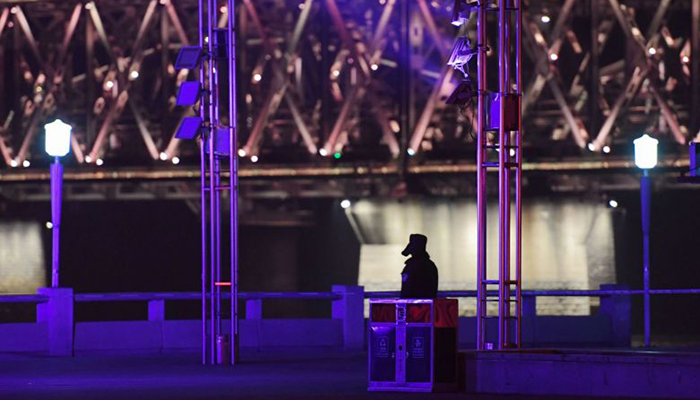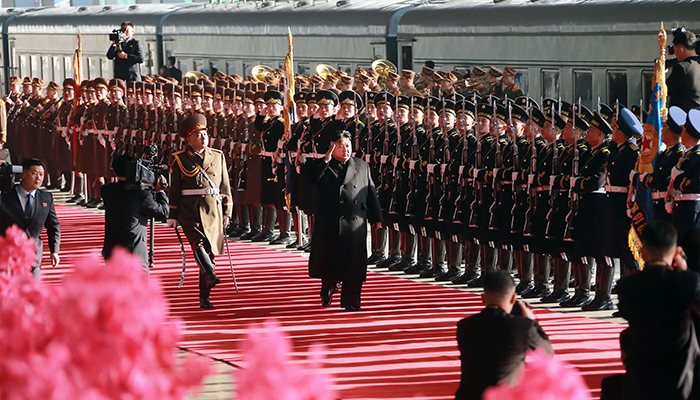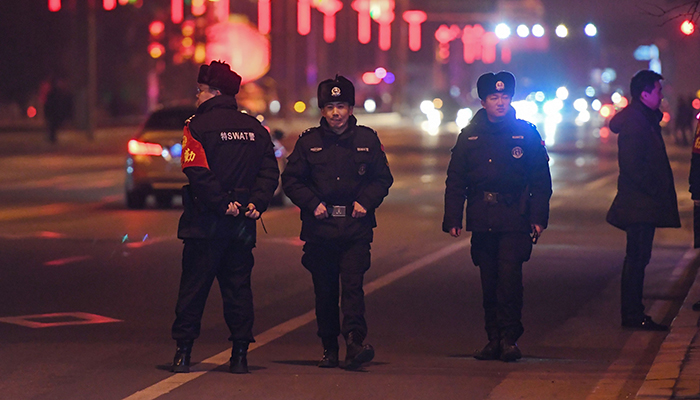HANOI: North Korean leader Kim Jong Un set off by train for Vietnam on Saturday, for his second summit with US President Donald Trump next week, media reported, and hours later, two witnesses saw a train crossing into China from North Korea.
The reports of Kim’s departure from North Korea came after Vietnam announced that Kim would make an official visit in “coming days”, as the Southeast Asian country prepares to host the summit with Trump on Wednesday and Thursday.
No details of the leaders’ travel arrangements, or for the summit, have been officially released.
Trump and Kim will meet in the Vietnamese capital, Hanoi, eight months after their historic summit in Singapore in June — the first between a sitting US president and a North Korean leader — at which they pledged to work towards the complete denuclearization of the Korean peninsula.
But progress has been scant since then.

The Trump administration has pressed North Korea to give up its nuclear weapons program, which threatens the United States before it can expect any concessions.
North Korea wants an easing of punishing U.S.-led sanctions, security guarantees and a formal end of the 1950-1953 Korean War, which ended in a truce, not a treaty.
Kim left the North Korean capital of Pyongyang at around 5 pm (0800 GMT) in an armoured train, Russia’s TASS news agency said, citing a North Korean diplomatic source.
North Korea’s state media has yet to confirm either Kim’s trip to Vietnam or his summit with Trump.
Two witnesses in the Chinese border city of Dandong, where the main rail line from North Korea arrives in China, said a train had crossed the Yalu River into China at around 9.30 p.m. (1330 GMT).
South Korea’s Yonhap news agency and broadcaster YTN also reported that a train suspected to be carrying Kim had arrived in Dandong.
Chinese security chased away people trying to take photographs, one witness said.

It was unclear if Kim was on the train. China has declined to answer questions about Kim’s travel plans via the country.
It could take Kim at least two and a half days to travel thousands of kilometres through China by train to Vietnam.
Train spotting
A senior security official in Vietnam told Reuters that Hanoi had been expecting a Vietnam-bound train to depart Pyongyang on Saturday, but did not know if Kim Jong Un himself was on board.
Two sources with direct knowledge of security and logistics planning told Reuters on Wednesday that Vietnam was preparing for Kim to arrive by train.
His train was expected to stop at the Vietnamese border station of Dong Dang, where he will disembark and drive 170 km (105 miles) to Hanoi by car, the sources told Reuters.
Vietnamese police have stepped up security around the border station.

On February 26, Vietnam will ban traffic on the road Kim is expected to take to Hanoi from a station on the Chinese border, state media said.
Travel by train has been a favourite mode of transport for Kim Jong Un, and his father, Kim Jong Il, and grandfather, Kim Il Sung.
In 1958, Kim Il Sung went from Pyongyang to Beijing by train, then flew from Beijing to Hanoi in a plane provided by China, South Korea’s Yonhap News Agency reported on Saturday citing archived Chinese media reports.
Questions
The summit in Hanoi comes amid some questions about prospects for progress.
American intelligence officials have said they believe Kim is unlikely to ever relinquish his entire nuclear arsenal, and U.N. monitors have reported that in recent months North Korea had taken steps to hide, disperse and protect its weapons.
But a former US intelligence officer, who helped arrange the first summit, predicted on Friday the second summit would be more productive than the first, quoting Kim Jong Un as saying last year he did not want his children to live with the burden of nuclear weapons.
Kim is visiting Vietnam at the invitation of President Nguyen Phu Trong, who is also general secretary of the ruling Communist Party, Vietnam’s foreign ministry said in a statement earlier on Saturday, but it gave no further details.
The preferred location for the summit is the Government Guesthouse, a colonial-era building in central Hanoi, three sources told Reuters on Wednesday.







